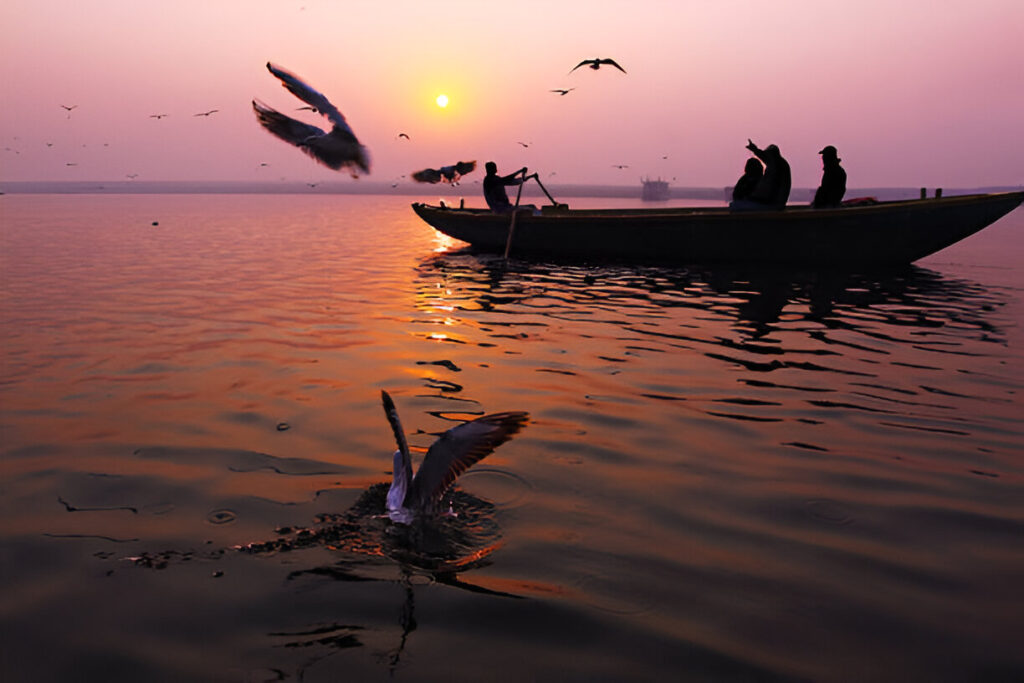
Kumbh | Milan | Confluence (Sangam) | Womb | Earth | Plentitude
Kumbh – a word that holds profound meaning in the tapestry of Indian culture and spirituality. It is often translated as a confluence , a milan or sangam, or a sacred union. Yet, it goes far beyond a literal interpretation. Kumbh signifies the womb of creation, the bounty of the Earth, and the plentitude of life. It is a symbol of abundance, life-giving water, and the elixir of immortality – Amrita. At its core, Kumbh embodies the essence of life, uniting the spiritual with the material, and connecting human beings with each other and nature in a profound and lasting way.
Kumbh as a Womb of Creation and Spirit
In Hindu philosophy, the Kumbh is often referred to as a pot or pitcher, the container of the Amrita, the divine nectar of immortality that emerged from the churning of the cosmic ocean (Samudra Manthan). This container, in many ways, is symbolic of the womb, holding within it the potential for creation and sustenance. Just as the womb nurtures life, the Kumbh holds the essence of life itself—water, the spirit, and the hope for eternal liberation.
The Kumbh Mela, one of the largest spiritual gatherings on Earth, is a celebration of this sacred womb of creation. Millions of pilgrims gather at the confluence of holy rivers to take part in a ritualistic cleansing, seeking to renew their souls and reconnect with the divine. But more than that, the Kumbh is a reminder of the interdependence between humanity and nature, between life and spirit, and between individuals and the greater collective.
The Confluence of Sacred Rivers: A Metaphor for Life’s Union
The confluence of rivers during the Kumbh Mela, especially the Sangam at Prayagraj, where the Ganges, Yamuna, and the mythical Sarasvati rivers meet, is a profound metaphor for the union of life’s essential elements. Each river represents a distinct journey: the Ganges, with its cleansing and purifying powers; the Yamuna, with its nurturing flow; and Sarasvati, the hidden river, symbolizing knowledge and wisdom. When these rivers merge, they embody the unity in diversity, signifying the convergence of different paths, beliefs, and energies. Just as these rivers unite to create something greater than the sum of their parts, so too does life flourish when wisdom, compassion, and vitality come together, guiding us toward a harmonious existence where knowledge leads the way.
Kumbh Mela: Connecting Water, Life, and Spirit
At the heart of the Kumbh Mela lies the importance of water—the giver and sustainer of life. Water is more than just a physical element in Hindu thought; it is symbolic of the flow of consciousness, the spirit, and the essence of life itself. By immersing themselves in the sacred rivers during Kumbh, pilgrims believe they are washing away their sins and purifying their souls. This act of bathing is a profound metaphor for renewal, both physically and spiritually.
In a world where water is increasingly scarce and polluted, the message of the Kumbh is even more relevant today. It reminds us to respect and protect our natural resources, to see water not just as a commodity, but as a sacred life force. The rivers that converge at the Kumbh teach us the value of sustenance and the need to nurture life in all its forms—human, animal, and environmental.
Amrita: The Elixir of Immortality and Unity
The Kumbh also represents the search for Amrita, the nectar of immortality, that grants eternal life and liberation. According to Hindu mythology, drops of this nectar fell at four locations during the battle between the gods and demons, and these locations—Prayagraj, Haridwar, Nashik, and Ujjain—became the sites of the Kumbh Mela.
This Amrita is not just a mythical substance; it represents the spiritual knowledge and wisdom that can free us from the cycles of suffering and ignorance. It symbolizes the idea that true immortality comes not from living forever in the physical sense, but from living a life of virtue, kindness, and unity. In essence, the Amrita represents the binding force of humanity—the love, compassion, and understanding that can help us transcend the divisions that keep us apart.
A Message for a Better Tomorrow
As the rivers flow together, as the pilgrims gather, as the spirit merges with the body, the Kumbh Mela becomes a call for unity and harmony. It urges us to come together—not just in moments of spiritual reflection but in the everyday challenges of life. The confluence of the rivers at the Kumbh teaches us the importance of collaboration and collective action. Just as the Ganges, Yamuna, and Sarasvati meet to form a powerful force of nature, so too must we unite our efforts to build a world that is sustainable, compassionate, and inclusive.
In the context of today’s world, where we face environmental challenges, social divisions, and global conflicts, the message of Kumbh is clear: only by coming together—by recognizing the interconnectedness of all life, by respecting the natural world, and by striving for unity—can we create a better tomorrow for future generations.
Kumbh, in its essence, holds the blueprint for this union. It tells us that just as the rivers merge, so must our hearts and minds if we are to create a world where life, water, and spirit flow together in abundance and harmony. Let the message of Kumbh guide us, and let us come together in this great confluence of humanity to work towards a future that is bright, connected, and full of plentitude.

